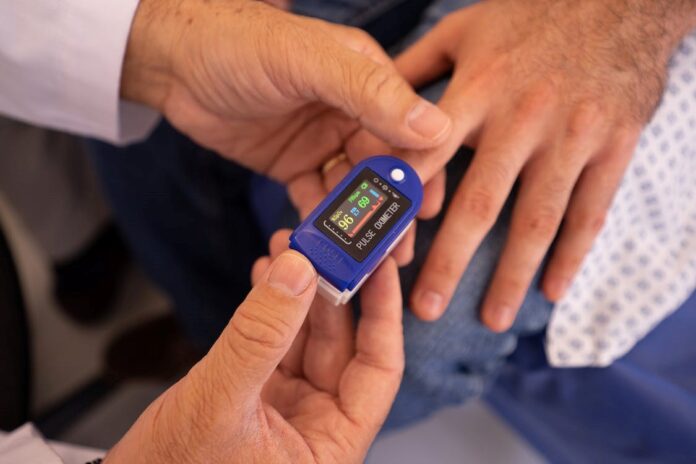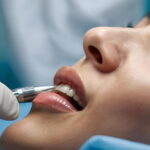Admittedly, we all have suffered from cough, sore throat, influenza, and cold at some point. And often, we don’t pay much heed to these health problems. Although our health is a valuable asset; yet, we struggle to maintain a healthy lifestyle in today’s fast-pacing and dynamic world.
Several prevalent health conditions affect individuals of all ages, from chronic illnesses to mental health disorders. According to CDC, approximately 6 out of every 10 Americans experience chronic health conditions, and 4 of those 10 have two or more. And like any other state of the US, Iowa also has its share of widespread health issues that affect its inhabitants.
These health issues often stem from unhealthy lifestyle choices, contiguity with toxic chemical substances, or genetic problems. With several health problems, one disorder or its treatment might trigger another. And the reason for the disorder might become evident after a protracted period of uncertainty, perhaps involving a significant number of medical checkups.
To streamline this journey and gain valuable insights into their overall health individuals can opt for an executive health screening in San Francisco. These comprehensive screenings go beyond routine checkups and delve into a thorough evaluation of various health markers. By conducting a range of specialized tests and assessments, an executive health screening can help detect potential risks and early signs of diseases, including those related to the heart, metabolism, and overall well-being.
Nonetheless, timely detection and treatment can make a world of difference in preventing these health issues from getting severe. While the human body is complex, recognizing health issues in the initial phase can be difficult. After all, some symptoms may become obvious right first, while others may get misdiagnosed for something else. However, knowing what signs to watch out for can be a lifesaver.
Here’s a roundup of some common health issues and symptoms to look out for:
1- Heart Disease
Heart disease encompasses a plethora of health conditions. These may include arrhythmias, congenital heart defects, or coronary artery disease. According to statistics, nearly 697,000 people die because of heart problems in the United States each year. In addition, according to this dentist in Mathews VA, there are some studies that connect poor dental health to heart disease. And if we talk about Iowa State alone, heart disease accounts for 23.1% of deaths. However, there’s hope – functional medicine in Iowa City provides a holistic and personalized approach to identifying heart disease. By figuring out underlying causes rather than treating the symptoms, functional medicine utilizes a multi-pronged method to promote optimal heart health. And this enables expert healthcare practitioners to develop comprehensive treatment plans that may include medications, dietary changes, or exercise regimens for heart patients.
2- HIV/AIDS
HIV, also known as human immunodeficiency virus, plagues and damages the immune system’s cells, making it challenging for the body to contend with other illnesses. When this virus gravely impacts the immune system, it gives birth to immunodeficiency syndrome, i.e., AIDS. People with AIDS have considerably low levels of white blood cells in their bodies.
Although people with HIV experience flu-like symptoms during the initial stages, however, after this, the virus remains undetected in the body for an extended period. During this time, the virus destroys your body’s T-cells. When the count of T-cells drops to a drastically low number, and you begin contracting chronic diseases, it confirms that the virus has advanced to AIDS. Acute exhaustion, fever, extreme sweating, mouth ulcer, and weight loss are some potential signs of AIDS.
Nevertheless, some tests can help diagnose HIV in the body, including antibodies, antigens, and nucleic acid tests. One example is rapid hiv test kit that gives results in as soon as 60 seconds. Contingent to the patient’s condition, a healthcare practitioner may conduct further tests such as a pap smear, viral hepatitis screening, and CD4 count.
3- Conjunctivitis
Conjunctivitis, also known as sore or pink eye, essentially refers to the swelling of the conjunctiva. It is a thin transparent membrane that outlines the eyelids and front of the eye. There are several causes due to which an individual might suffer from conjunctivitis. For instance, hypersensitivity reactions to dust particles or pollen in the atmosphere can lead to pink eyes. In addition, a bacterial infection or exposure to things that contain chemical substances like shampoo or chlorine can also give rise to this condition.
The symptoms of conjunctivitis vary from person to person. For example, some may experience redness, irritation, and itchiness, while others might have to endure pus-like discharge after every few hours. And since this health condition is highly contagious, early detection is critical. However, the treatment of conjunctivitis depends on the cause; for instance, anti-allergy medicines and antihistamines drops can help treat allergic conjunctivitis.
4- Obesity
The word ‘obese’ implies an overweight person, i.e., who has an excessive accumulation of body fat. Individuals with a BMI (body mass index) of 30 or greater typically fall under obesity. While BMI isn’t the only method to diagnose obesity since muscular people tend to have a high number, in most cases, it helps identify whether the person qualifies as healthy or obese.
The primary cause of obesity is an increased number of calories. As a result, people suffering from obesity are at heightened risk of various health conditions. These may include high blood pressure, respiratory issues, prostate, coronary heart disease, stroke, and bowel cancer. Besides these, obese people may also suffer from psychological problems such as low confidence and depression.
Today, obesity has become a prevalent health issue, considering modern living includes eating highly processed and junk food. As per the reports, approximately 74% of individuals in the United States tend to suffer from obesity.
5- Diabetes
Diabetes is a chronic health disorder that mainly occurs when the sugar level or glucose in the bloodstream gets significantly high. When this happens, the body lacks the ability to form insulin – a hormone that assists in absorbing glucose from the bloodstream. According to the statistics, 37.3 million Americans had diabetes in 2019, with an estimated 8.5 million people with undiagnosed diabetes.
It’s relevant to note that there are two types of diabetes – type 1 and type 2. Type 1 diabetes is often genetic and gets detected at a young age. However, type 2 diabetes, a far more common one, occurs due to unhealthy lifestyle choices. Some common signs of diabetes include blurry vision, exhaustion, extreme weight loss, and constant itching.
Final Words
To wrap up, identifying common health issues and pinpointing their symptoms is the key to maintaining overall well-being and preventing severe complications. By taking notice of significant changes in our bodies, we can take the necessary measures to tackle health conditions before they worsen.
And while self-diagnosis is critical to maintaining overall wellness, it’s never an alternative to professional medical consultation. If you have been experiencing symptoms of health issues, it’s always best to seek advice from a healthcare provider. By taking proactive measures toward your health, you can live a healthy and fulfilling life without the fear of being caught off guard by unforeseen health conditions.
Remember, whether making simple lifestyle changes or getting frequent medical checkups done, the power to address potential health concerns lies in your hands. So, let’s take reign of your body and prioritize your health.
- Ketamine-Assisted Therapies: Impacts on Employee WellbeingWorkplace stress is common today. Many employees feel tired, anxious, or burned out. Regular therapy can help, but some people need more support. Ketamine-assisted therapy is showing good results for mental health. A ketamine-assisted therapist guides each session safely. This therapy can improve mood, focus, and energy. Learning more about it can help teams stay… Read more: Ketamine-Assisted Therapies: Impacts on Employee Wellbeing
- The Future of Men’s Health: Why Telehealth Is Here to StayTelehealth isn’t just a pandemic trend that faded into the background. For Australian men, it has become one of the most practical, time-saving, and stress-free ways to manage everyday health — and it’s shaping the future of how we access care. Platforms like DOCTO, an Australian online doctor and specialist telehealth service, are leading the… Read more: The Future of Men’s Health: Why Telehealth Is Here to Stay
- How to Build a Simple, Clean Skincare Routine ?You don’t need a complicated skincare routine. It doesn’t have to be something that requires twenty different products and confusing steps. Your routine works well with just a few high-quality clean ingredients. The beauty industry keeps pushing more products, but your skin actually needs less. You only need a simple approach to get better results… Read more: How to Build a Simple, Clean Skincare Routine ?
- How Preventive Dental Care Supports Overall HealthHave you ever wondered how a simple dental checkup could impact your entire body? Oral health is more than just a bright smile. Studies show that poor dental habits can contribute to serious health problems. Gum disease and tooth decay are linked to heart disease, diabetes, and infections. Yet, many people overlook preventive dental care.… Read more: How Preventive Dental Care Supports Overall Health
- Seeing Clearly in a High-Tech World: A Deep Dive into Advanced Vision Care ServicesProtecting your eyesight isn’t optional—it’s essential. Modern eye care has evolved far beyond basic exams, offering advanced diagnostics, personalized treatments, and surgical innovations that keep vision sharp for life. A leading example is Intermountain Eye Center, home to specialists like Dr Fishburn Boise, where patients receive comprehensive, high-level vision care designed to preserve long-term eye… Read more: Seeing Clearly in a High-Tech World: A Deep Dive into Advanced Vision Care Services






